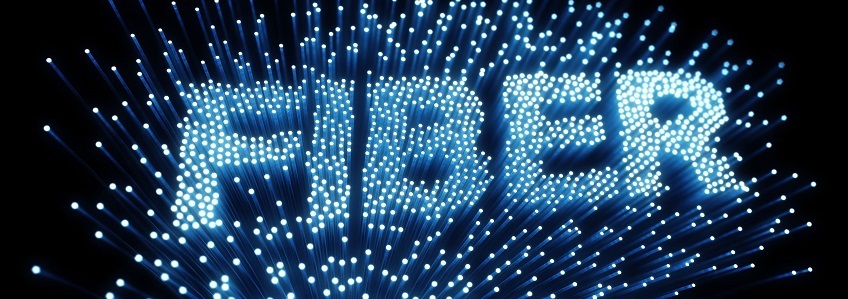

Telecoms providers: Optical fibre, a giant leap for broadband?
After years of reliance on DSL and cable technologies, optical fibre, more often than not simply referred to as “fibre” is being touted as a revolution for broadband internet. In order to evaluate if this claim is true to reality, and compare existing plans and their pricing, let’s have look into the principles of fibre optics telecommunications, and list the advantages and disadvantages of this technological choice.

What is optical fibre?
The use of fibre for telecommunications is based on fibre optics, a complete field of applied science which has been known to engineers for over a century.
Optical fibre digest
The general idea is to guide light by refraction through extremely thin cables with a transparent core, and transparent cladding with a comparatively low index of refraction. When repeaters are used to echo the signal at regular intervals, this allows almost lossless transmission over very long distances, with very little permeability to noise.
This principle was first demonstrated as early as 1840, and with the invention of transceivers, transforming electrical signals to optical ones, fibre optics were later adapted to voice signals by phone companies, video signals by television crews (the first moon landing was filmed using this technology) and ultimately were capable to carry data on the internet.
Optical fibre for telecommunications
Light going through these cables can be easily converted into data. The fact that this technology suffers little attenuation with distance, the flexibility and quickly decreasing price of fibre cables, quickly made it an ideal solution for carrying voice and communications data faster and more consistently than with traditional copper lines of cables.
Telephone networks using this technology were installed in the 1970s. First broadband plans using optical fibre were marketed in the 1990s.
Pros and cons of optical fibre
This technology brings many advantages, but also a few disadvantages over other broadband technologies.
Advantages
Fibre does indeed mean much faster and consistent internet connections.
- Theoretically, fibre can be as fast as 111 gigabits per second,
- Current commercial plans advertise speeds of up to 100 megabits per second,
- Another advantage is that these values are true for both download and upload speeds,
- And they remain more or less the same no matter how far from the local exchange the final user is located.
Finally, this technology is more secure as it is much more difficult to “listen in” on optical fibre than on copper wires.
Disadvantages
Still, some disadvantages may be regretted:
- An optical fibre network needs to be physically installed, which connects all the way to the ultimate user.
- Traditional phone lines cannot be used, and this requires heavy infrastructure developments. Many buildings, blocks or even cities are still not connected.
Fibre providers and plan prices
Providers
Almost every well-known Internet Service Provider in the UK now offers a fiber-optics-based broadband service. Sometimes, the technology is called “fibre optic broadband”, sometimes, just “fibre”.
Providers therefore include:
- Virgin;
- Sky;
- TalkTalk;
- BT;
- Plusnet.
Typical plan prices
Broadband plans from these carriers usually cost between £30 and £38 per month:
- Charges are divided between a service fee, and a slightly more expensive line rental fee;
- Almost all ISPs will have a “special offer” cutting the service fee by half for up to 12 months, thereby bringing the monthly price closer to £20. temporarily.




